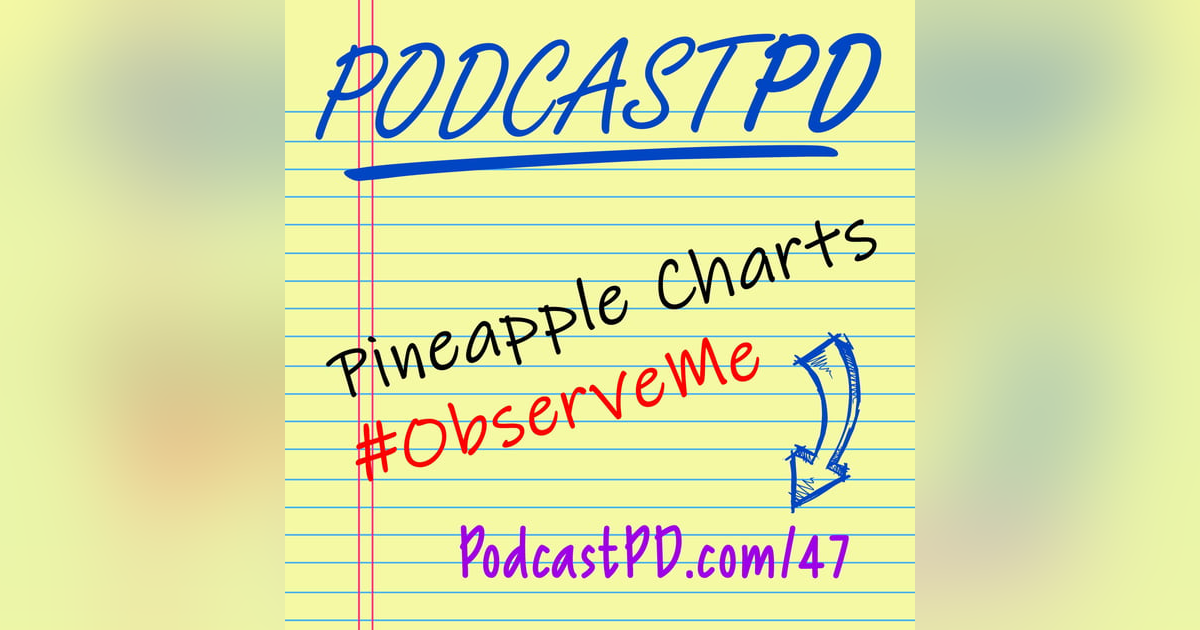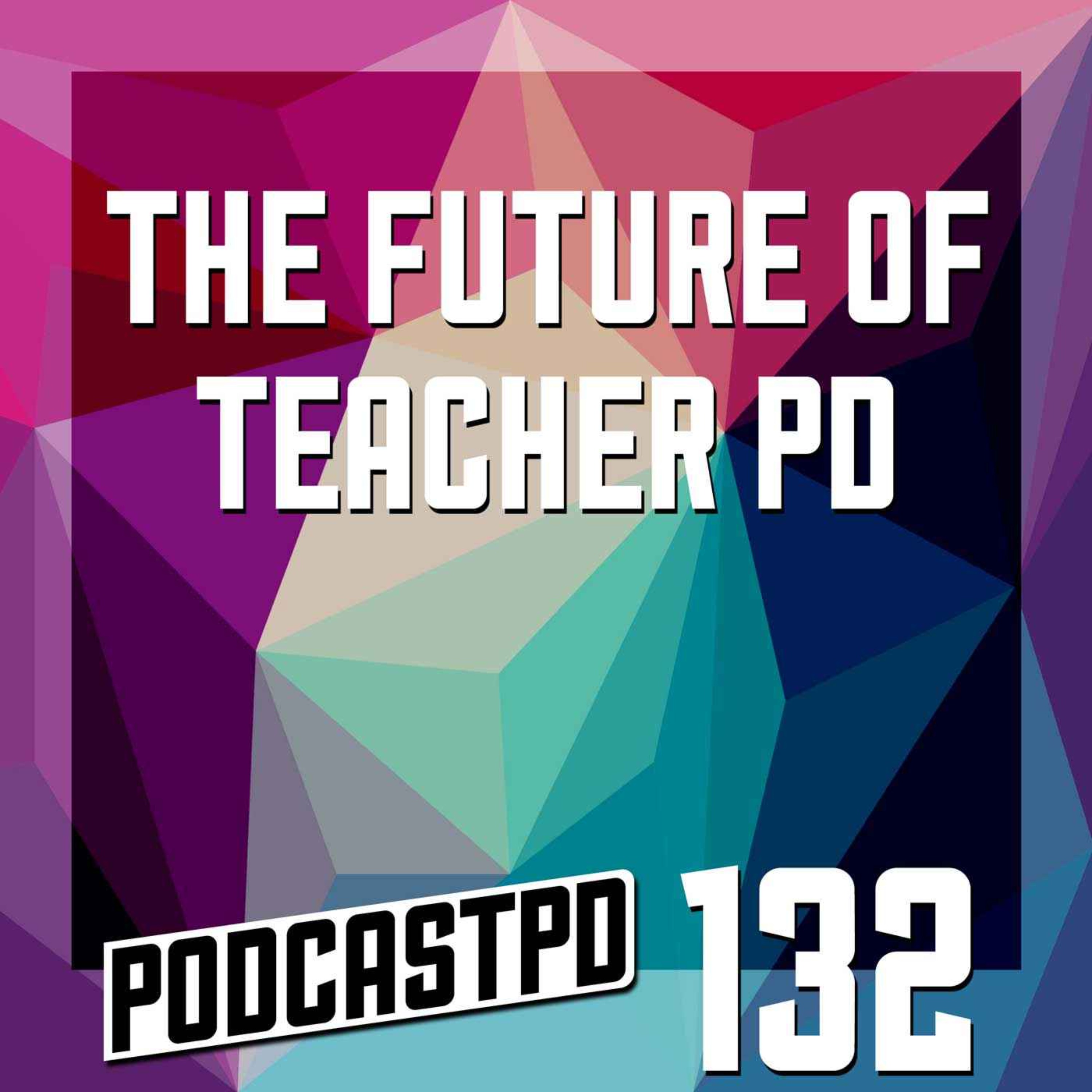Pineapple Charts and #ObserveMe - PPD047

Join us as we get into Pineapple Charts and the benefits of watching and learning from your colleagues.
Featured Content
Pineapple Charts & #ObserveMe
WHAT IS A PINEAPPLE CHART? – From the Cult of Pedagogy…
- A Pineapple Chart is a system that allows teachers to invite one another into their classrooms for informal observation.
- The chart is set up in some location where teachers go on a daily basis: the teacher’s lounge, the copy room, or wherever teacher mailboxes live in your school.
- On the chart, teachers “advertise” the interesting things they are doing in their classrooms, activities they think others might want to observe. The activities could be as complex as a science lab, a history simulation, or a Skype session with a school in another country. Or they could be as simple as a read-aloud or a lesson on badminton.
WHAT IS #OBSERVEME
- It involves educators making a sign that welcomes their colleagues to observe them and give feedback in specific areas they have listed. Then they ask their peers to come by and share their expertise.
Positives
- Pineapple charts do a great job of quickly informing staff members about what they could learn from their peers. It’s informal, so all you have to do is list what you are doing and when it’s happening. This makes it easy for everyone to participate in.
- #ObserveMe gives the teacher being observed specific feedback that can be used to improve her practice. So, both the observer and the person being observed gain insight that will help improve each other’s practice. Once you create the sign, you could leave it up for the entire year as long as those are the goals you still want to get feedback on.
Negatives
- Pineapple charts require regular updates so that people know what is going on in a classroom. That takes a little more maintenance. They also tend to encourage more of a one-sided flow of information: the observer is learning from the observed. Any feedback is shared informally.
- #ObserveMe requires more planning and work ahead of the observation. The teacher being observed needs to think of what he/she wants feedback on, use that information to create a sign, and display it in her room. Observers may also initially feel awkward giving anything but positive feedback.
Links and Resources
Resources
- https://www.cultofpedagogy.com/pineapple-charts/
- https://robertkaplinsky.com/whats-difference-observeme-pineapple-charts/
What We’re Listening To
AJ: The Big Leap – Most of us believe that we will finally feel satisfied and content with our lives when we get the good news we have been waiting for, find a healthy relationship, or achieve one of our personal goals. However, this rarely happens. Good fortune is often followed by negative emotions that overtake us and result in destructive behaviors. “I don’t deserve this,” “this is too good to be true,” or any number of harmful thought patterns prevent us from experiencing the joy and satisfaction we have earned. In The Big Leap, Hendricks reveals a simple yet comprehensive program for overcoming this barrier to happiness and fulfillment, presented in a way that engages both the mind and heart. The book describes the four hidden fears that are at the root of the Upper Limit Problem. The Big Leap delivers a proven method for first identifying which of these four fears prevents us from reaching our personal upper limit, and then breaking through that limitation to achieve what Hendricks refers to as our Zone of Genius.
Chris: The Rain Delay – Looking for advanced stats, game breakdowns, and game nuances? Welp, you’re looking in the wrong place. But if you want to talk mascots, memorabilia, and moments? We’re here from you. Each week, Cooperstown Kurt will welcome a guest from the world of baseball to talk about the lighter side of the game. Player interviews, movie breakdowns, and an “On The Road” subset are just some of the episodes you’ll hear.
First episode – “The Sandlot” Director David Mickey Evans
Stacey: When: The Scientific Secrets of Perfect Timing – Everyone knows that timing is everything. But we don’t know much about timing itself. Our lives are a never-ending stream of “when” decisions: when to start a business, schedule a class, get serious about a person. Yet we make those decisions based on intuition and guesswork.
Timing, it’s often assumed, is an art. In When: The Scientific Secrets of Perfect Timing, Pink shows that timing is really a science.
Drawing on a rich trove of research from psychology, biology, and economics, Pink reveals how best to live, work, and succeed. How can we use the hidden patterns of the day to build the ideal schedule? Why do certain breaks dramatically improve student test scores? How can we turn a stumbling beginning into a fresh start? Why should we avoid going to the hospital in the afternoon? Why is singing in time with other people as good for you as exercise? And what is the ideal time to quit a job, switch careers, or get married?
In When, Pink distills cutting-edge research and data on timing and synthesizes them into a fascinating, readable narrative packed with irresistible stories and practical takeaways that give readers compelling insights into how we can live richer, more engaged lives.
See acast.com/privacy for privacy and opt-out information.
ASK QUESTIONS, SHARE FEEDBACK, AND CONNECT
- Email feedback@podcastpd.com
- Join our Text Community - powered by Remind
BECOME AN EXECUTIVE PRODUCER
Thank you to our current EPs:
DISCLOSURE
This post may contain links to products or services with which we have an affiliate relationship. We may receive commissions or bonuses from your actions on such links.
















